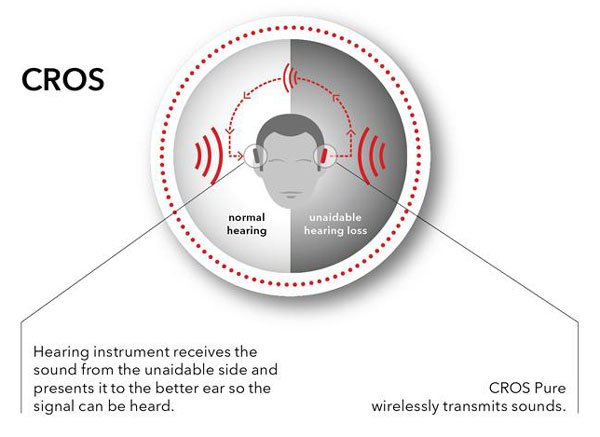What is the difference between unilateral and asymmetric hearing loss?
An individual who has unilateral hearing loss has normal hearing in one ear and impaired hearing in the other ear. The severity of hearing loss in the impaired ear can vary person to person depending on the cause of the hearing loss. Unilateral hearing loss can be congenital (present at birth), acquired gradually over time, or appear suddenly. Typically, hearing loss is symmetric, or the same, in both ears. Common causes of permanent unilateral hearing loss are: sudden sensorineural hearing loss, damage to the auditory system from noise exposure, trauma from ear related surgery, stroke, chronic infection of the inner or middle ear, a benign growth on the nerve responsible for hearing and balance, etc.
Hearing loss that is significantly worse in one ear is considered to be asymmetric. Asymmetric hearing loss refers to an individual who has normal hearing in one ear or hearing loss in both ears, but is significantly worse in one ear than the other.
Where do people with single-sided hearing have difficulty?
People with unilateral or asymmetric hearing losses often have difficulty understanding speech in situations with a lot of background noise. They may also report difficulty localizing sound, estimating the proximity of the sound source, and difficulty hearing people if they are sitting on their bad side.
Even though these individuals have normal or near normal hearing in one ear, the auditory system works better when both ears are working together. After sound enters the ear and passes through the hearing organ, the signals from each ear are added together. When the signals are added, the brain is able to determine where the sound is coming from and how close it is. The summation of sound between the ears also helps the brain differentiate between speech and background noise. Hearing devices, such as the CROS/BiCROS, were created to provide auditory information from both sides of the head, to improve the ease of listening.
Who is a candidate for CROS/BiCROS devices?
CROS and BiCROS hearing devices are designed to treat hearing loss that is only in one ear, or hearing loss that is in both ears, with one ear having more severe impairment. More specifically, the CROS/BiCROS is beneficial when the ear with the most hearing loss has very poor word recognition compared to the better hearing ear.
What does CROS/BiCROS stand for?
CROS: Contralateral Routing of the Signal
BiCROS: Bilateral microphones with Contralateral Routing of the Signal
How do the devices work?
For a CROS/BiCROS system, the CROS aid (transmitter) is worn on the bad ear and a hearing device is worn on the better hearing ear. The CROS aid sends information from the impaired side to the hearing device where the sound enters the normal/near normal hearing ear.
For a BiCROS system, the sound is still transferred to the better hearing ear, however, the signal is mixed with amplification needed to treat hearing loss in that ear.
Are there other options for people who have difficulty hearing only from one ear?
CROS/BiCROS systems are a great option for people who have significant unilateral or asymmetrical hearing loss, however, the BAHA is another popular choice for individuals with single-sided hearing loss. Bone anchored hearing aids (BAHA) are often used for people who have conductive hearing loss (hearing loss originating in the outer or middle ear), but they can also be used with a single-sided sensorineural hearing loss. In order to receive a BAHA a strict criteria for hearing loss must be met.
How do I know if a CROS/BiCROS system or BAHA is right for me?
To learn more about CROS/BiCROS or BAHA, please call our office to schedule a hearing test with one of our audiologists. After the hearing test, the audiologist may recommend scheduling a hearing aid evaluation appointment and you will have the opportunity to trial either a CROS/BiCROS or BAHA in the office.


